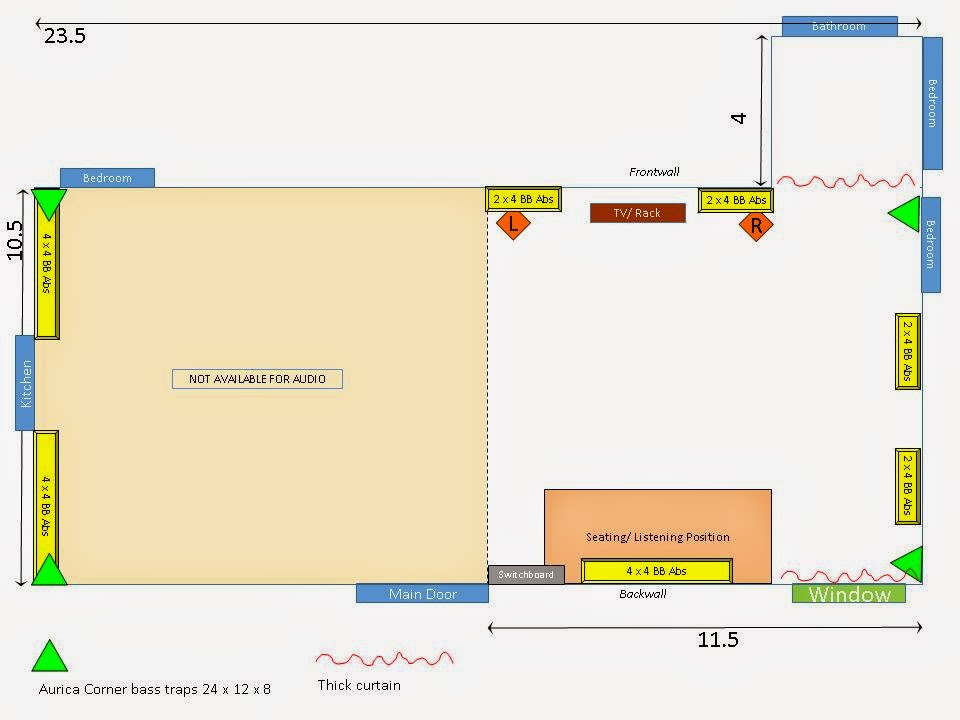sound_cycle
Well-Known Member
Hi
I've been reading a lot on room treatment and found a lot of useful information on hfv. I think I have kind of understood what I need.
I was thinking of going the DIY route but there is that ready to use solution from here
I am not quite ready with a plan but a discount offer on bajao.com for corner bass traps has spurred me into action a little ahead of schedule
The room is 23.5 x 10.5 x 10 H. There a number of doors and one window. There is a small alcove. A portion of the room is not available for audio, but might need treatment ?
The goal is to rid the room of its worst modes and flutter echoes on a budget.
I have made a room plan and shown the treatments I plan and shown it on the figure below. Could you please let me know what you think of the plan.
Should I get the bass traps or will the broad band absorbers suffice ?

ciao
gr
I've been reading a lot on room treatment and found a lot of useful information on hfv. I think I have kind of understood what I need.
I was thinking of going the DIY route but there is that ready to use solution from here
I am not quite ready with a plan but a discount offer on bajao.com for corner bass traps has spurred me into action a little ahead of schedule
The room is 23.5 x 10.5 x 10 H. There a number of doors and one window. There is a small alcove. A portion of the room is not available for audio, but might need treatment ?
The goal is to rid the room of its worst modes and flutter echoes on a budget.
I have made a room plan and shown the treatments I plan and shown it on the figure below. Could you please let me know what you think of the plan.
Should I get the bass traps or will the broad band absorbers suffice ?

ciao
gr
Last edited:

